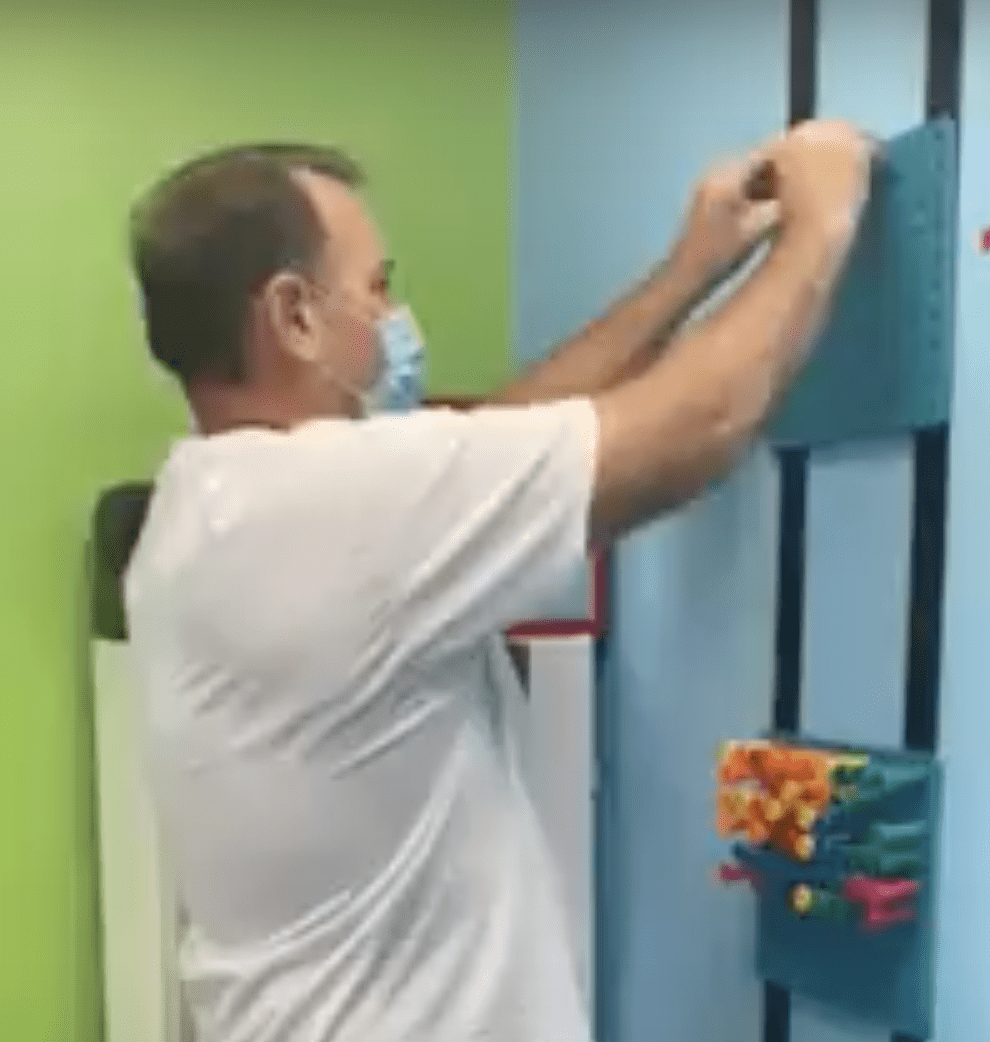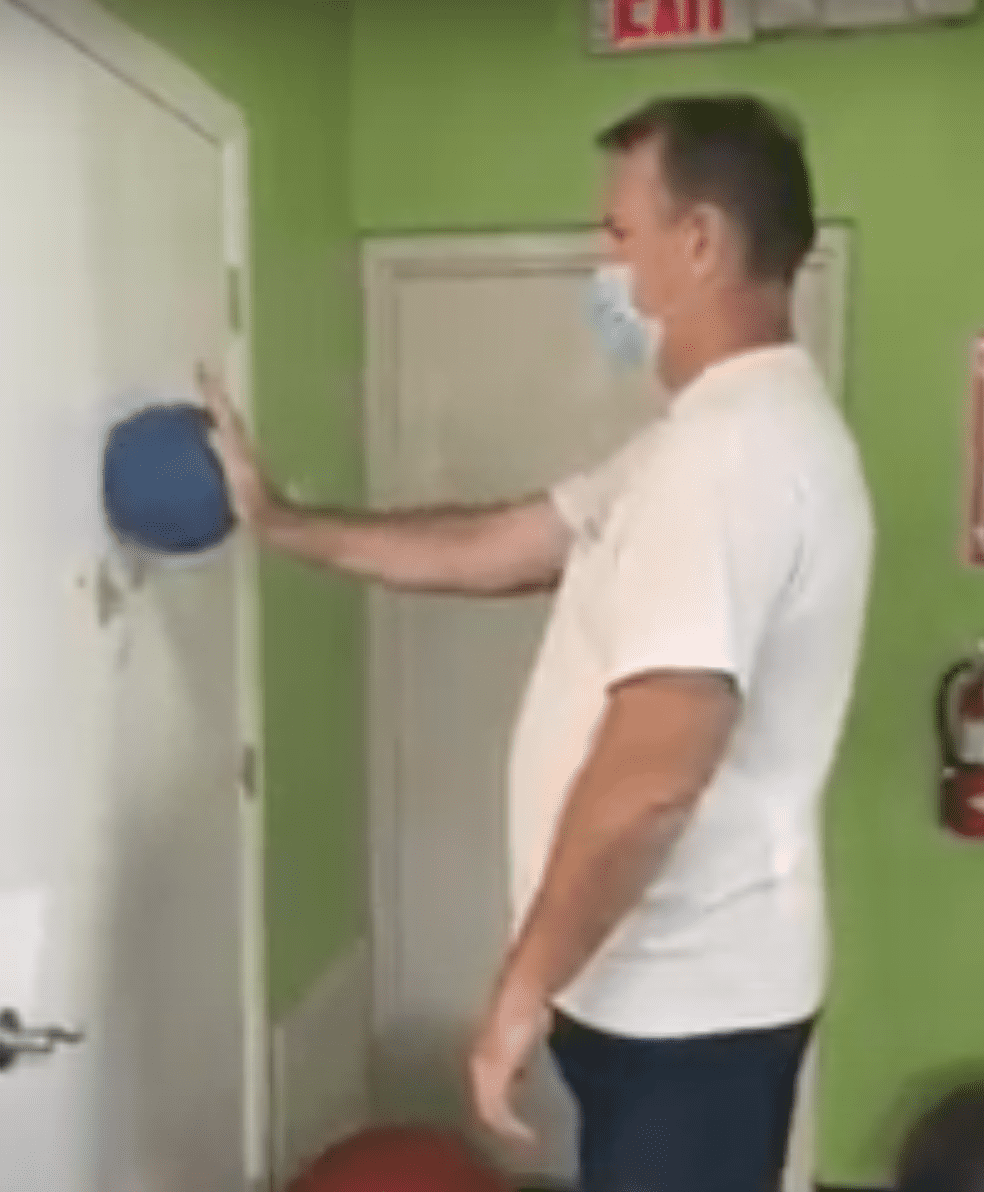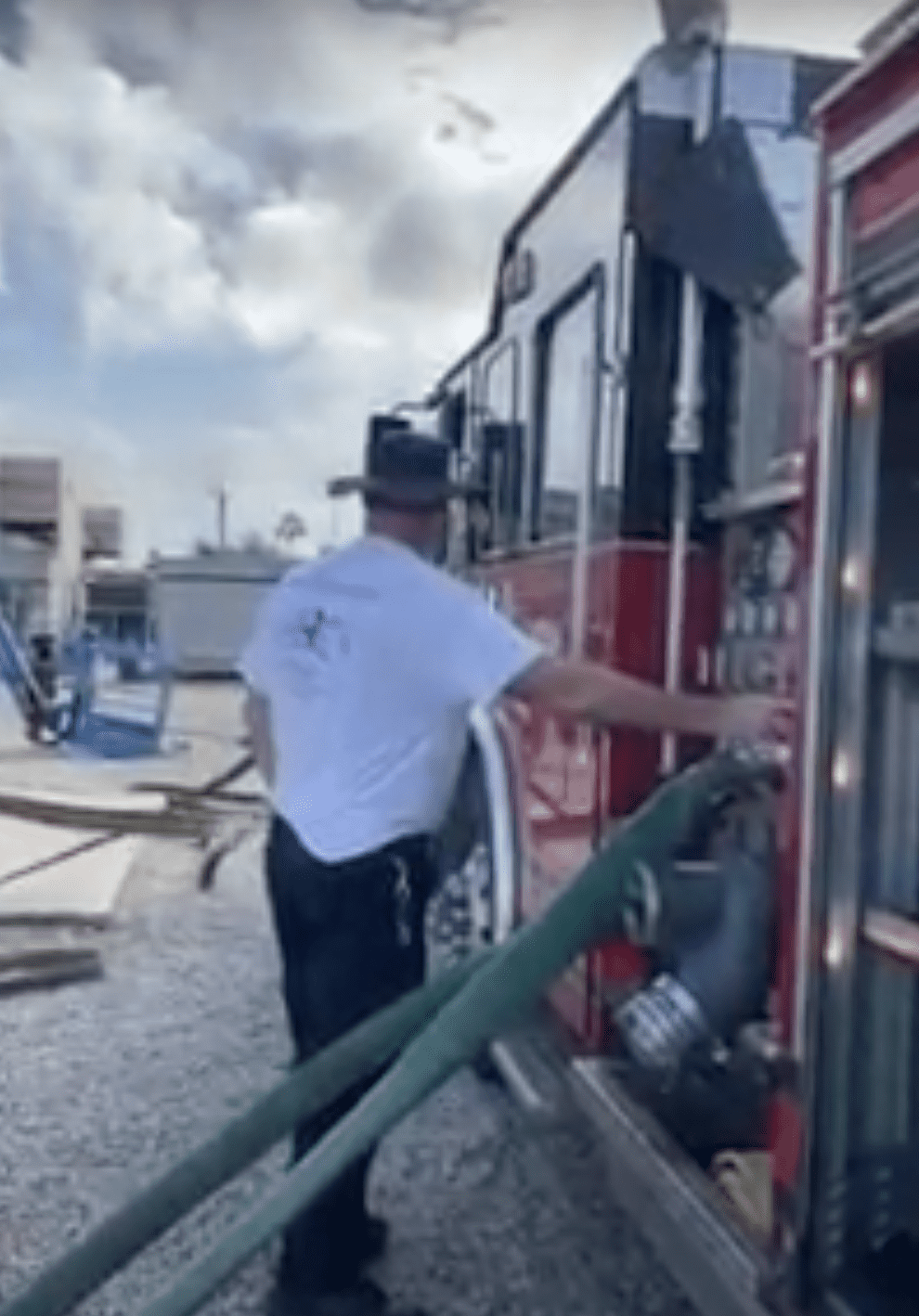Outpatient Rotator Cuff Surgery Expectations
- What is a rotator cuff?
- What are the signs you’ve injured your rotator cuff?
- How can you treat a rotator cuff injury?
Thanks to advances in technology, rotator cuff surgery can be performed in an outpatient setting, meaning patients return home the same day as their procedure.
Daniel had his outpatient rotator cuff surgery with Randy S. Schwartzberg, M.D., a board-certified orthopaedic surgeon specializing in sports medicine and elbow, knee, and shoulder surgery at Orlando Orthopaedic Center. A firefighter by trade, he was injured on the job and sought out treatment to alleviate his pain and restore range of motion.
“The biggest benefit of this surgery with Dr. Schwartzberg was preparing me to get back to work quicker,” says Daniel.
What is a Rotator Cuff?
 The rotator cuff is a group of muscles and tendons that holds the shoulder joint in place. The shoulder consists of three bones:
The rotator cuff is a group of muscles and tendons that holds the shoulder joint in place. The shoulder consists of three bones:
- The humerus, or upper arm bone
- The scapula, or shoulder blade
- The clavicle, or collarbone
The shoulder is a ball and socket joint; the ball of the humerus fits into the socket of the scapula. There are a group of muscles and tendons surrounding the shoulder joint that keeps the ball of the upper arm bone in the socket of the shoulder. Those muscles and tendons are known as the rotator cuff. There is also a bursa, or a lubricating sac, between the rotator cuff and the bone to make everything glide smoothly together.
When these connective tissues work properly, they allow the arm to raise up and down fluidly and rotate with no pain. If a part of the rotator cuff becomes irritated and worn out through overuse or damaged in a traumatic injury, pain, reduced range of motion, and weakness can occur. This can make even simple daily activities like brushing hair painful.
For a professional firefighter like Daniel, the loss of strength in his arm became so debilitating he couldn’t work.
Arm weakness is a sign of a rotator cuff injury, but what are some of the other symptoms to look for with a rotator cuff injury?
What Are the Signs You’ve Injured Your Rotator Cuff?
 The most frequents signs that you’ve injured your rotator cuff include:
The most frequents signs that you’ve injured your rotator cuff include:
- Pain in the shoulder and arm whether you are at rest or trying to use the limb
- Weakness when trying to lift objects
- Limited range of motion that doesn’t allow you to lift the arm higher
- Cracking and clicking noise from the joint
When you injure the rotator cuff, you know it. Daniel had the typical arm pain and weakness that we see in most rotator cuff injuries. He says, “The pain was pretty severe when I moved in certain directions. I couldn’t raise my arm past my shoulder level. I couldn’t raise it laterally.”
Sometimes the rotator cuff tendons are torn so badly they are no longer fully attached to the head of the humerus. The bursa can also inflame, adding to the painful condition. Typically, the severity of the injury consists of one or more tears in the muscles or tendons that could include:
- A partial or incomplete tear damages the tendon but doesn’t sever it
- A full-thickness or complete tear is when the tendon separates from the bone
Rotator cuff tears can occur through injury or degeneration, but the signs are generally the same; pain, weakness, and loss of motion. An acute tear of the rotator cuff can occur from lifting something too heavy or with a traumatic injury like a dislocated shoulder. Degeneration is the wearing down of the rotator cuff from repetitive motion which can occur naturally as we age. Some of the factors that could cause degeneration of the rotator cuff to include:
- Repetitive motion injuries from sports like weightlifting or baseball or routine motions that happen frequently on the job
- A lack of blood supply as we age could lead to a rotator cuff tear
- Bone spurs can form as we age, as well, causing the gradual tearing of the rotator cuff
As people age, they naturally become more at risk for a rotator cuff tear. Painters, carpenters and any profession where repetitive overhead activities are required are at risk for this type of injury.
How Can You Treat a Rotator Cuff Injury?
 There are surgical and non-surgical options to treat a rotator cuff injury. Non-surgical options include:
There are surgical and non-surgical options to treat a rotator cuff injury. Non-surgical options include:
- Modification of or limiting activities that cause the pain
- Physical therapy
- Over the counter pain relief
- Rest and ice
- Steroid injection
Surgical treatment for a torn rotator cuff most commonly involves reattaching the muscles and tendons or smoothing (debridement) the edges of the torn tissue. The most common surgical options include:
- Traditional open repair which requires inpatient surgery with a large incision
- Outpatient surgery with an arthroscopic repair that uses smaller incisions with a small scoped camera to see inside the joint
Physical therapy, immobilization, passive and active exercises are part of the rehabilitation of the joint, which, depending on the severity, could take a few months to heal.
Daniel says, “I tried a couple different things like physical therapy and tried to work through all that. It did work to a degree, but not 100%.” Dr. Schwartzberg conducted tests and determined it was finally time to do surgery to repair the damage.
Daniel says, “I had complete trust in him. Starting from the first time I met him, he was very likable, knowledgeable, and explained all of the test results.”
Like many patients undergoing surgery during the COVID-19 pandemic, Daniel expressed concerns about the procedure during this time. After visiting Orlando Orthopaedic Center, he realized that he felt completely safe because they had plenty of safeguards in place to reduce exposure to the virus. He says, “I felt very secure with the safety protocols they had.”
Ultimately, Daniel underwent outpatient surgery to repair his rotator cuff. He says, “It was a very streamlined, systematic approach, and it’s pretty impressive.” Today, there are several surgery options, as advancements in these procedures now allow for less invasive procedures that allow the patient to go home the same day without an overnight hospital stay.
Daniel’s experience with outpatient rotator surgery was very positive. He’s back on the job and highly recommends Dr. Schwartzberg and his team. He says, “Many people I’ve worked with have gone through Orlando Orthopaedic Center and had good results.”


